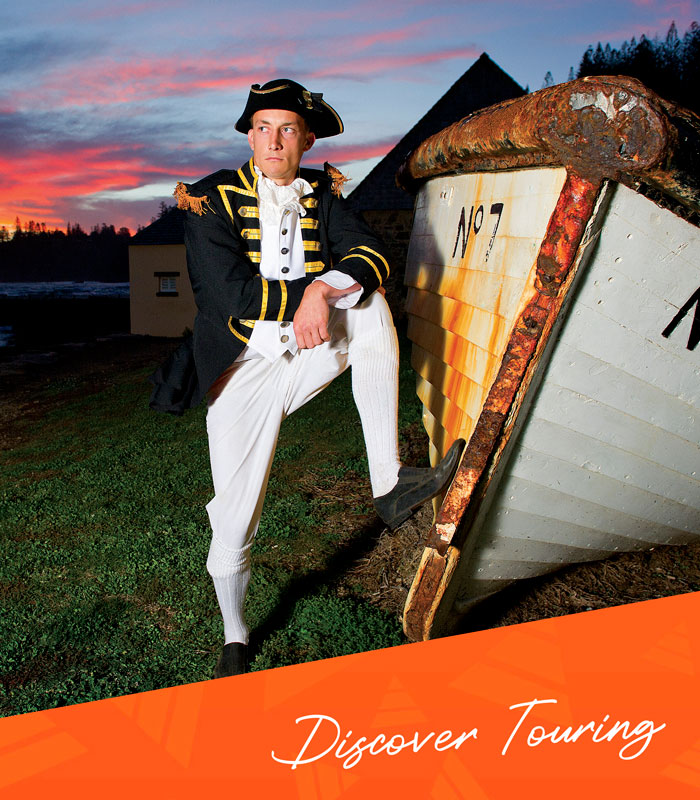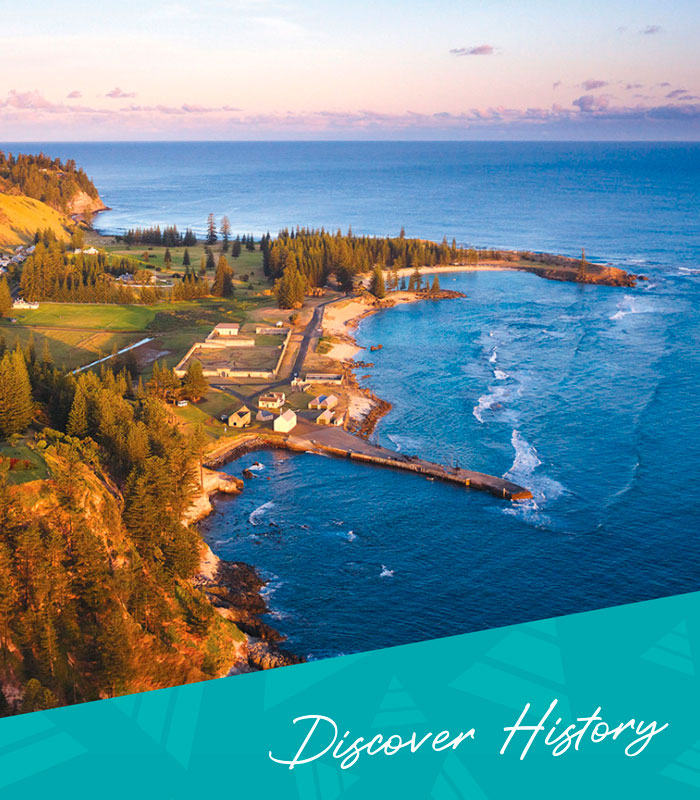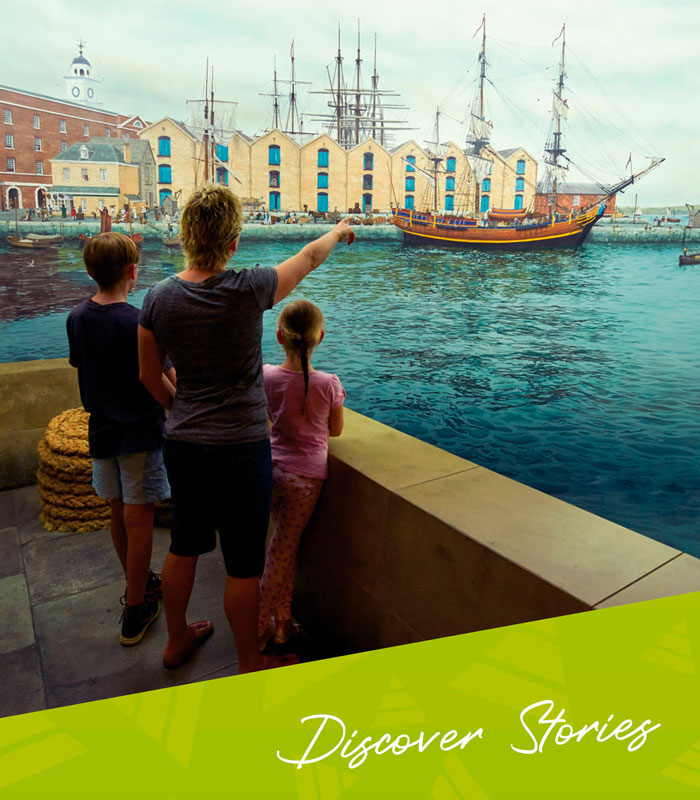Home » All Articles » Convict Mutiny: 15th January 1834, Norfolk Island
Convict Mutiny: 15th January 1834, Norfolk Island

“Thirteen desperate men have been executed … and, we are informed, died penitent”
These words are from the description in The Sydney and NSW Advertiser on Thursday 16 October 1834 of the execution of participants in one of Norfolk Island’s most infamous convict mutinies that had happened earlier that year on 15 January 1834. Of all the convict uprisings during the Second Settlement this was arguably the most audacious. Three months in the planning, it involved more than 130 convicts in three simultaneous riots aiming to overthrow the Military, kill the Commandant and escape the island. The newspaper, court documents and eyewitness reports of the day reveal the drama, high emotion and vast cast involved.
The plot had been formulated in whispers, eventually written down and over the months, shared with approximately one in every six convicts. As Justice William Westbrook Burton, the Judge who eventually heard the case remarked, “It was a deep laid, well concocted, and very generally extended Conspiracy”.
The trial proceedings are recorded in The Sydney Gazette on Saturday 13 September 1834. Crown Solicitor David Chambers stated the case for the prosecution and outlined the plan:
“It had been arranged that on that morning about 30 men should fall out of the gangs on pretence of sickness and go to the hospital, there secure all the inmates, and wait a certain signal to rush round the back of the gaol at the time the guard received the gaol-gangs”. The convicts would then attack the guards of the gaol-gang from the rear. Meantime, “It was further arranged that about 60 men who were at the Longridge farm (about a mile from the settlement) should have scouts posted along the road to give the signal to the men at Longridge when the hospital party had rushed from the hospital, and that the men at Longridge should thereupon rush the tool-house … arm themselves with axes, pitchforks, and other weapons and run down to the assistance of the hospital and gaol parties …”
Once overcome the soldiers would be placed in front of the convicts and marched to the Settlement Guard who would not shoot for fear of harming their comrades. If they did not surrender, the building would be set alight to burn them out. From there the mutineers would cross the road, storm Government House and secure the Commandant. Chambers continued: “When having obtained from the Commandant the private signal for vessels arriving off the island, they were to put him to death, together with Captain Fyans and all other persons who were obnoxious …” The women were to be shared amongst the men who “behaved best during the contest”.
The first ship to arrive to the island would have a boat sent to her with a party of convicts dressed as soldiers who would rush the military. While that vessel sailed for South America others who could not fit would leave using the large launches.
In reality, the dreaming, scheming and planning of sailing off to everlasting freedom was fanciful. At the time their motivations were written from two opposite view points. The first as articulated by the Crown Prosecutor held the view that this was simply “a diabolical conspiracy … where the projectors are bad men combining together for a wicked purpose …” The inherent wickedness of these men was the reason they were on Norfolk Island to begin with and they were acting true to form. The opposing view was that the conditions on Norfolk Island also drove men to act this way “… if men are thought worthy to live, why reduce them to a state to avoid which they court death … and commit new and still more fearful crimes? This is the natural consequence of the unnatural system pursued at Norfolk Island – a system which, so long as it is persevered in, will tend only to multiply crimes, and to provide occupation for the executioner”. (The Sydney Gazette Thursday 16 October 1834).
One of the mutineers, Henry Drummond, a convict transported Loose Looat age fifteen for pick pocketing said “he would not be long on the island, he would fight for his liberty”. This was Drummond’s second escape attempt as he had been aboard The Wellington in 1827 en route to Norfolk Island when the ship was captured by the convicts and sailed to New Zealand, where they were re-captured and sent back to Sydney.
One of those described as being foremost in the attack on the gaol guard gang was convict Robert Douglas. During the trial his aggressive role in the mutiny was recorded as “after a violent struggle with the soldier Pearson, Douglas with the assistance of several others, succeeded in forcing Pearson’s musket from him … Douglas snapped the gun several times at one of the soldiers, and at an overseer twice or thrice …” Douglas was also reputedly the convict who recorded the impact of the conditions on Norfolk Island as “let a man’s heart be what it will, when he comes here, his Man’s heart is taken away from him, and there is given to him the heart of a Beast …”
Upon Norfolk Island re-opening as a penal settlement in 1825, the convicts found themselves in the place that the Governor of NSW Sir Thomas Brisbane ordered be “made the new plus ultra of convict degradation … The felon who is sent there is forever excluded from all hope of return”. During his term Sir Ralph Darling added: “My object was to hold out that Settlement as a place of the extremist punishment, short of Death”. Across the duration of the Settlement running until 1855 we now know that not all convicts sent were ‘the worst of the worst’ as originally planned, but were first time offenders sent straight from Britain. While not all convicts experienced extremes of punishment, this mutiny occurred during a very grim time when life for convicts was relentlessly hard.
January 1834 was towards the end of the term of Commandant James Thomas Morisset. His very name conjures strong emotion. Facially disfigured during the Peninsula Wars “his jaw is much diseased, hanging slack below a stationery eye and a mouth slewed at an angle”. The scars of his face have today been dramatically compared to the scars of his soul, and for at least the last fifty years or so he has been emphatically described as a violent disciplinarian, tyrant and sadist.
On the day of the mutiny Morisset was in his bed in Government House unable to respond, possibly suffering a mental breakdown, however the cause of his illness was never documented. When he had arrived five years earlier in 1829 his reputation had preceded him. During his term in Newcastle NSW (the nearby town of Morisset is named after him) he had been applauded by the Governors of the day for quelling, without hesitation, troublesome convicts as well as Aborigines. He was a man of his time – when strong men using the lash, force and fear were accepted as the best men to keep control of a convict settlement.
Morisset actively sought out the position of Commandant on Norfolk and is said to have considered himself “… the man to keep these scoundrels in order … I understand all their priggings (thefts)”. On his arrival Morisset also brought the first females since NSW Governor Ralph Darling’s 1827 decree that none were to be permitted onto the island. Those females were his wife and the first two of eventually five daughters, three being born during his term here. Over the following years the conduct of the convicts became steadily more extreme and murders, uprisings and attempted mutinies occurred. Some of the more hardened convicts had avowed that if the opportunity arose they would murder the Commandant and his family as well as everyone at the Settlement.
From 1832 Morisset had unsuccessfully requested removal from the island. As a man who believed in the use of power as the best means to control, he was faced with the reality of increases in murders, mutiny and escape attempts. Perhaps that fed his decline or it could have been health issues that arose from his earlier facial wounds. By the month before the mutiny however Governor Burke was supporting his application to leave the Island noting his “very dangerous state of health”.
With Morisset unable to get up from his bed as the mutiny attempt unfolded, Captain Foster Fyans of the 4th Regiment was left to take charge. Fyans himself has gone down in history as a violent man earning the name ‘Flogger Fyans’. He infamously discarded the whips on the island as ineffective and ordered a more robust type be sent. On their arrival he recorded “… the Cat-o’-nine tails sent down by the last Ship are excellent – I have no doubt that such implements will be the means of producing a very good affect, and will most likely put a stop to murders and Boat Robberies”. In the weeks leading up to the mutiny Fyans had received word that an attempt would be made. The informers however could provide no details of where, when or how only that something was to ensue. Fyans put his men on alert. As it turned out, rainy weather caused a day’s delay. The first of the gangs, the ‘goal gang’ were delayed by a shower of rain forcing the second ‘respite gang’ to keep moving past the assigned spot where the mutiny would occur. That night Drummond told the men that “the gaol-gang had sent word by him that they hoped the men would come up to the ‘scratch’ on the following morning, that they were all ready” (Supreme Court of NSW 10-11 July 1834).
For the convicts, it was all over fairly quickly. Alexander Gamack Esquire, Colonial Assistant Surgeon gave evidence at the trial stating that “between five and six o’clock he was awoke in his quarters by the noise of musquetry and in looking out of the window, saw soldiers in different directions, firing…(and) then saw a convict running with a musquet, as if from the gaol towards the hospital …” Fyans had been able to quickly rouse his men and they were able to efficiently overcome the gaol-gang. By the time the ‘Longridge gang’ ran down the hill brandishing their pitchforks, hoes and axes they were hollowing “death or liberty”, effectively giving their positions away and easily able to be shot down by the soldiers. By the finish five convicts either lay dead or died in the following days.
The grim outcome of the swift failure of the mutiny is today told in our cemetery. Of the thirteen men executed, nine of their headstones still stand. The executed men were at least allowed spiritual comfort as the Reverend Dr. William Bernard Ullathorne, the Roman Catholic Vicar-General, and Reverend Henry Tarlton Stiles of the Church of England were sent to the island just before the hangings. They both stayed on the island for six months and later gave testimony to the 1838 Select Committee of the House of Commons on Transportation.
Reverend Ullathorne’s testimony told of arriving at the goal where thirty of the convicted men were held. He found that they had not been told who of them was to live and who was to die and that the task then fell to him; “I said a few words to induce them to resignation; and then I stated the names of those who were to die; and it is a remarkable fact, that as I mentioned the names of those men who were to die, they one after the other, as their names were pronounced, dropped to their knees and thanked God that they were to be delivered from that horrible place, whilst the others remained standing mute; it was the most horrible scene I ever witnessed. Those who were condemned to death appeared to be rejoiced”.
The evidence of this period in Norfolk’s past is today found in the Commissariat Store Museum in Kingston. In one cabinet leg irons and whips tell of the misery, along with a bell purportedly rung when executions occurred. The January 1834 mutiny attempt was indeed carried out by ‘desperate men’.
____
Image Credit: Robin Nisbet
www.robinnisbet.com
____
Article content disclaimer: Article first published in YourWorld, Volume 04 Issue 01, 2014. Please note that details of specific travel, accommodation and touring options may be outdated. References to people, places and businesses, including operating days and times may be have changed. References to Government structure and Government businesses/entities may no longer be applicable. Please check directly with businesses and/or Government websites directly rather than relying on any information contained in this article before you make travel arrangements.



















